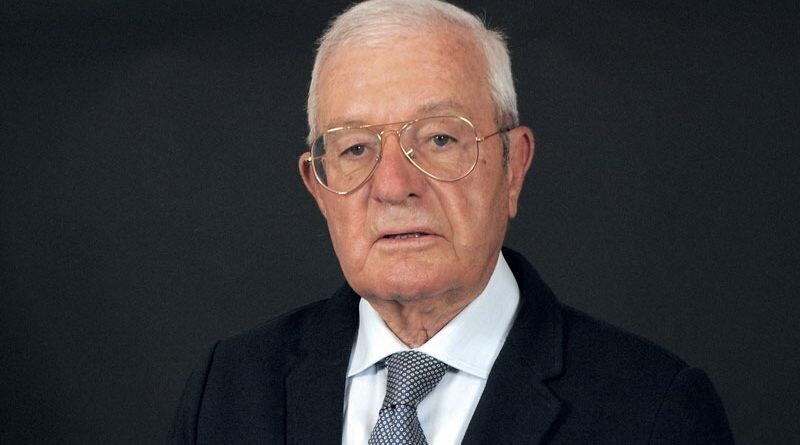

The announcement of a ban on Russian primary aluminium in the EU's 16th package of sanctions represents untimely self-inflicted damage without any effect on the announced goals. If confirmed by EU ministers, this measure would put the entire downstream European aluminium value chain at risk.

The Russian aluminium industry represents less than 0.5 per cent of the country's GDP, and the ban covers essentially one private company, RUSAL, which is the sole significant exporter. The company's sales to the EU recently amounted to roughly 2 billion euros. This amount was misleadingly presented as revenue for the Russian State, while it is the revenue of a private company. Obviously, only a small fraction of this amount is collected as tax by the Russian State. Therefore, the ban will have absolutely no effect in terms of what sanctions are meant for, restricting the revenues of an adversary.
"The ban will most probably not affect RUSAL very much and may even give it a financial boost. The company's exposure to the EU market has now been reduced to around 10 per cent. China's purchases of its metal have grown by 300 per cent in the past years. RUSAL produces one of the world's lowest carbon primary aluminium, a much in demand green metal for which there are few producers at the required scale worldwide. This low-carbon primary aluminium, essential to Europe's industrial and decarbonisation agenda, will go in greater quantities to our most formidable competitors in Asia and other emerging economies. These volumes of green aluminium will come back in Europe in the form of competing processed products that will wipe out many EU manufacturers", stresses Mario Conserva, President of FACE.
Meanwhile, RUSAL might benefit from price hikes generated by the ban and its effects on a world commodity market that is expected to be in shortage and with high premiums for the coming years. RUSAL's market capitalisation was raised on the Hong Kong Stock Exchange right after the media announced the ban.
We also saw a rise of 2 per cent in LME price or USD 50 per tonne of aluminium. This is, in fact, good for RUSAL but detrimental to the European downstream aluminium value chain: aluminium is a low-margin industry where the purchase of the raw material amounts to 60 to 80 per cent of production costs.
"Downstream SMEs, which need to buy primary aluminium, constitute more than 90 per cent of the European aluminium industry's workforce. The EU has a special, treaty-based responsibility to protect and support them, yet they are the ones who will pay the price of the ban", Conserva adds.
This decision defies economic and geopolitical logic because it would weaken the EU's downstream aluminium sector. This is after the sharp 65 per cent reduction of the EU's primary aluminium production capacities that already occurred in the past 20 years.
The vitality of EU downstream transformers is crucial for the long-term prospects of the few remaining EU smelters, who sell more than 95 per cent of their production to local and regional customers.
Banning Russian aluminium imports could not have come at a worse time, a few days after the US Administration announced its tariffs on aluminium imports into the US. We don't have any visibility yet on the implications of the major international upheavals that are currently unfolding at great speed.
The US tariffs will not be applied to the imports of scrap – which will exacerbate the shortage of aluminium scrap in the EU and make a more ambitious substitution of primary aluminium with recycled material impossible to achieve.
The EU is a growing net importer of primary aluminium, with an import dependency now above 87 per cent: it is difficult to understand, in this context, that we choose to restrict supply options.
The announcement of the ban seems to have been done based on outdated market data of the past 3 years, which were under exceptional circumstances, and without an impact assessment and forecasts that take into account not only the latest trade and geopolitical moves of the US Administration but also the cyclical nature of the aluminium industry, leaving the EU aluminium sector exposed to major post-ban consequences.
Such risks are amplified by the fact that all southern maritime routes of potential partial substitution for the banned supplies are subject to conflict risks or are much longer, costlier and more polluting and that most distant suppliers who could punctually and partially substitute RUSAL in the past 3 years are not meant to become structural long-term solutions for the EU at the required scale of our aluminium demand growth and with the lowest carbon footprint that European customers demand.
"The truth", says Mario Conserva, "is that the EU will compete more and more with the US and Asia to attract low carbon primary aluminium and that our downstream aluminium value chain should not be further weakened as we face a fierce and too often unfair international competition".
Here, we are not speaking of a few more banks or boats; we are speaking about a sanction measure that has a holistic effect on an entire industry and on critical and strategic material.
With such a ban, we are not really decreasing our dependencies; instead, we are increasing our vulnerabilities.
FACE hopes that EU ministers will remove aluminium from the 16th package, pending more clarity on the international context and a proper assessment of the consequences and prospects for the European aluminium industry this year and in the near future.
Note: This press release has been issued by FEDERATION OF ALUMINIUM CONSUMERS IN EUROPE (FACE) and has been published by AL Circle without any modifications and edits.
Responses








